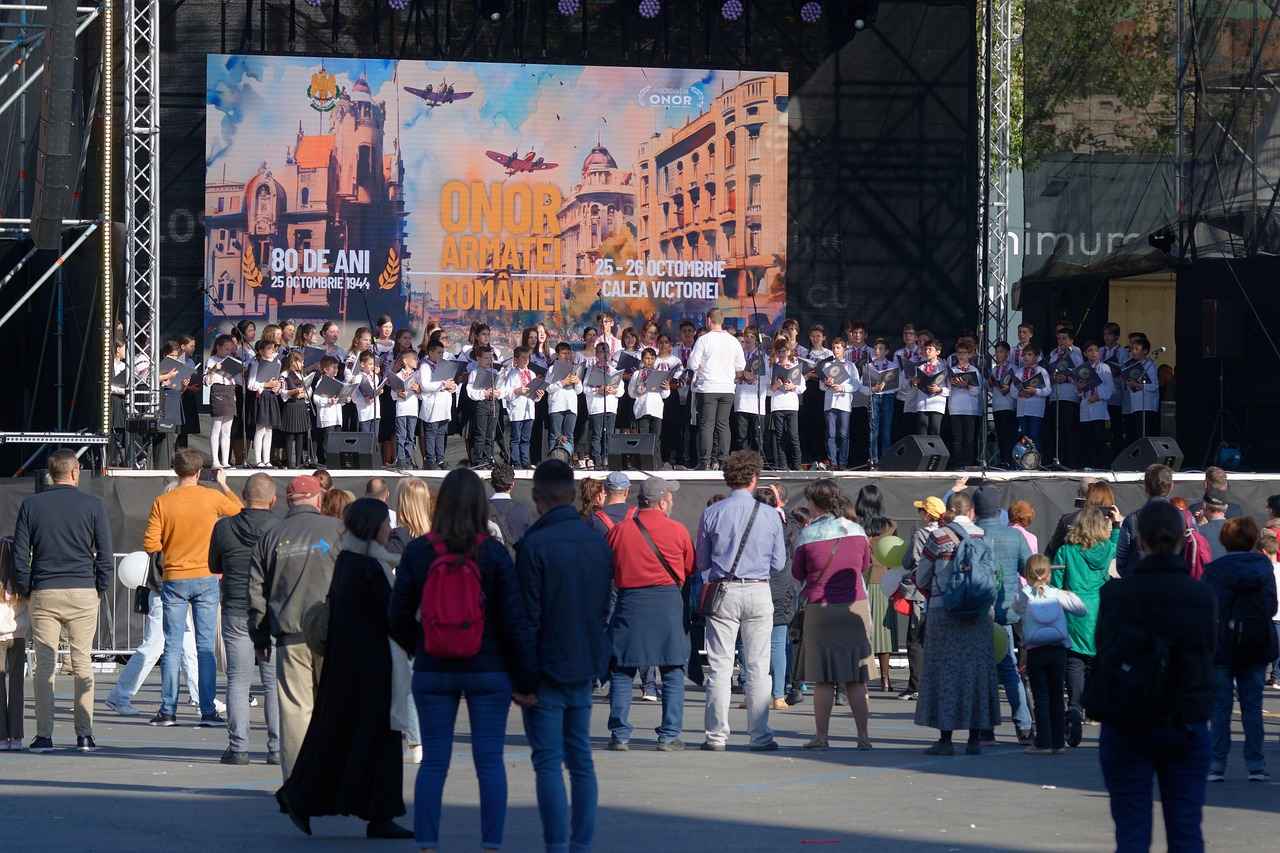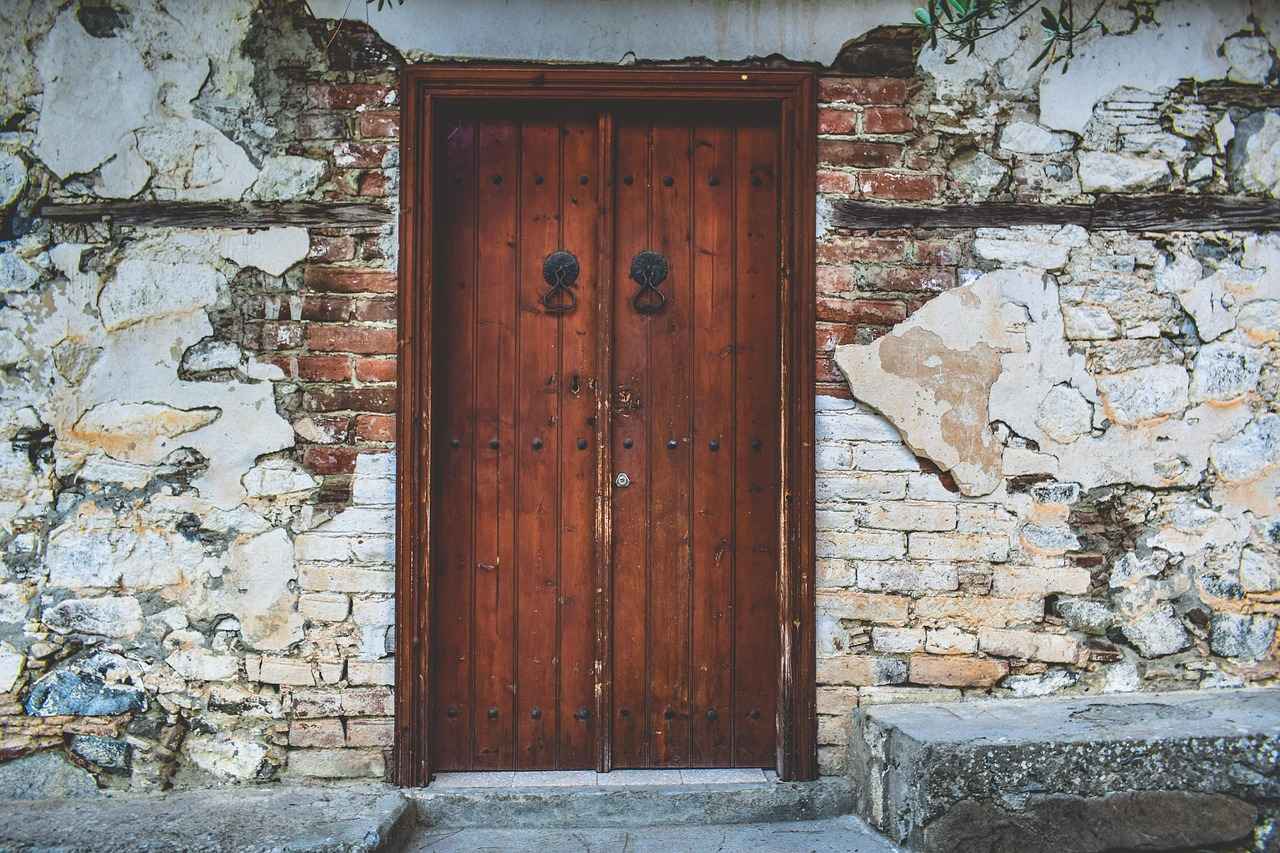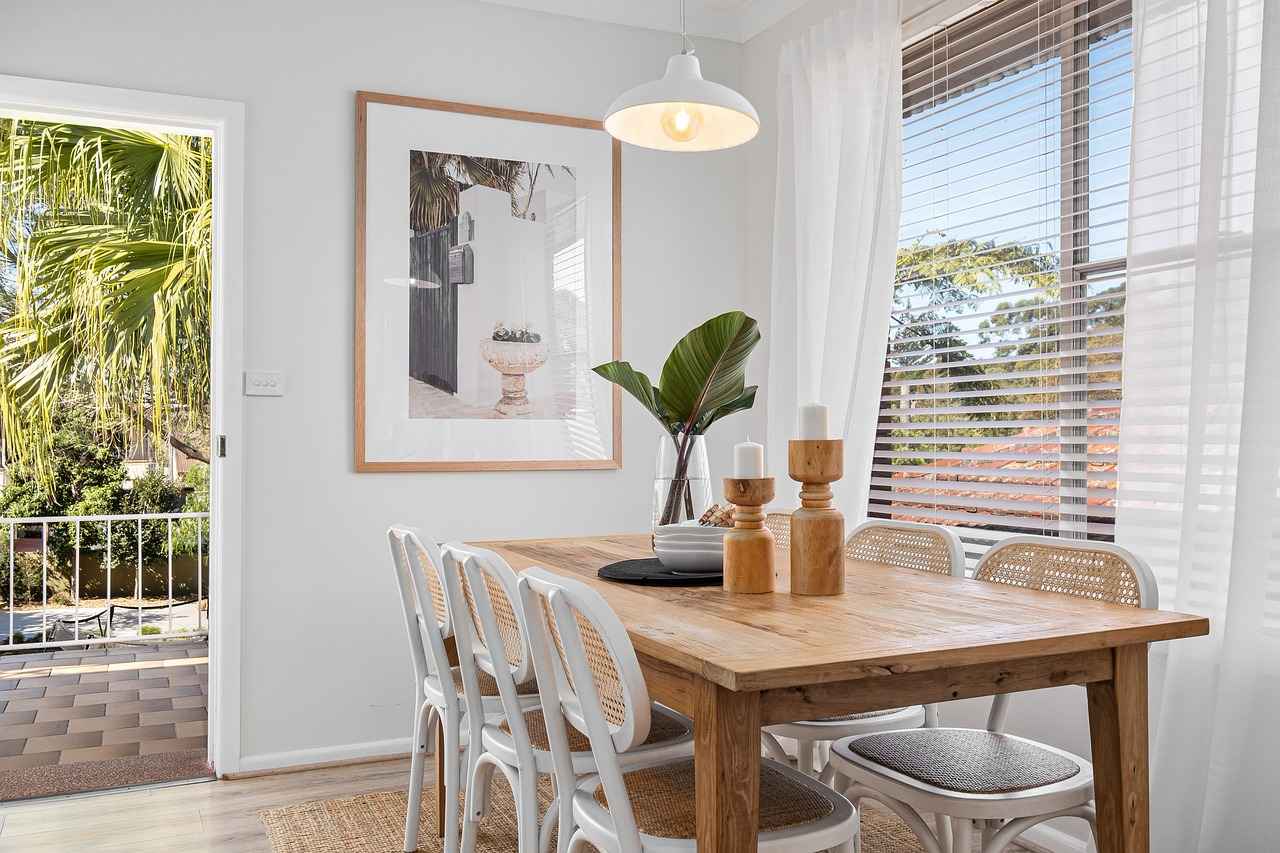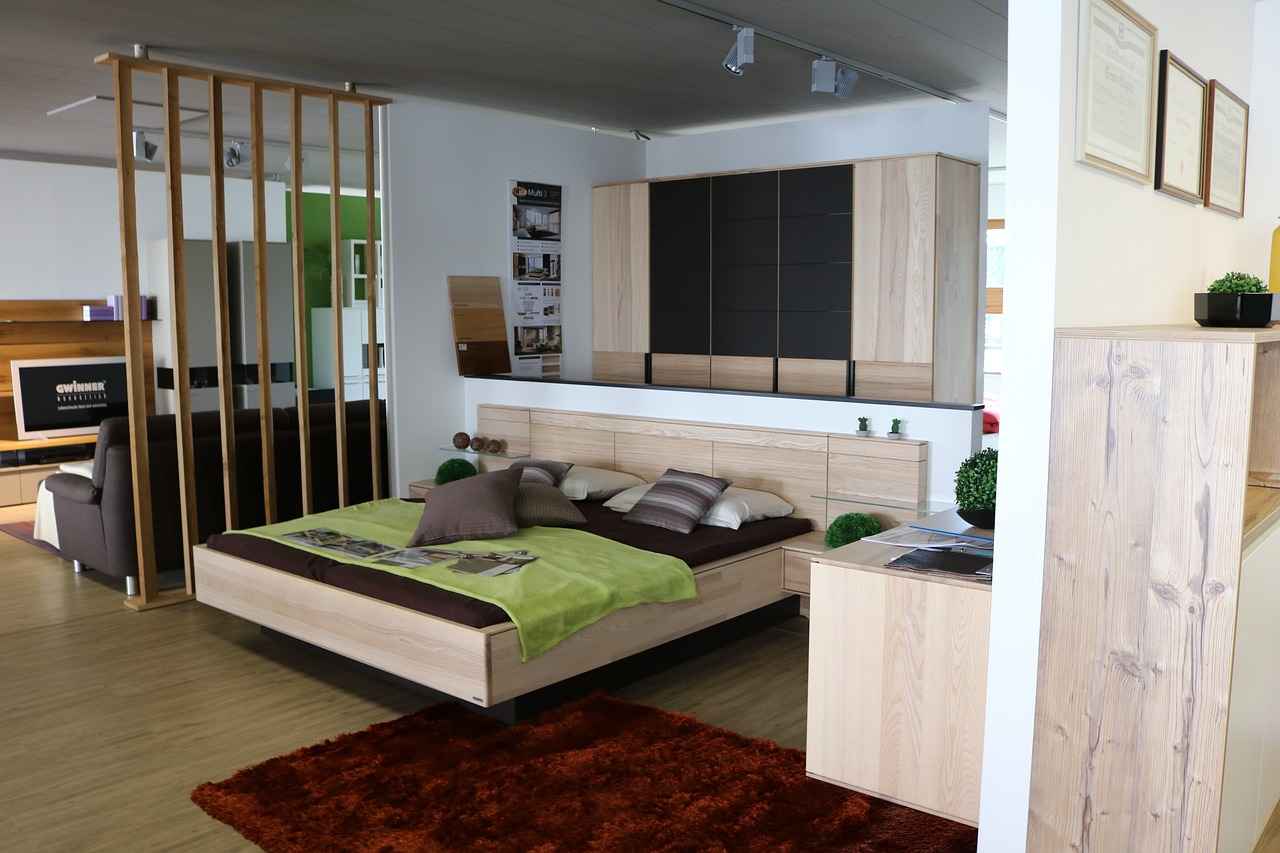This article explores the differences between Shoji screens and wooden room dividers, helping you make an informed decision based on aesthetics, functionality, and cost-effectiveness.
Shoji screens are traditional Japanese room dividers made of wood and paper. Their elegant design and versatility make them a popular choice for enhancing interior spaces. The translucent paper allows natural light to filter through, creating a soft, inviting atmosphere.
Wooden room dividers are versatile furniture pieces crafted from various types of wood. They come in a wide range of styles and finishes, allowing homeowners to express their personal style while effectively separating spaces. From rustic to modern designs, wooden dividers can complement any home aesthetic.
The minimalist design and translucent nature of Shoji screens create a serene ambiance. These screens are ideal for spaces that prioritize tranquility and simplicity, making them perfect for meditation rooms or peaceful living areas.
Wooden room dividers offer durability and a vast array of design options. They can serve as a statement piece in a room or blend seamlessly with existing decor. Homeowners can choose from various wood types, each with its unique grain and color, enhancing the overall aesthetic of the space.
While Shoji screens provide some degree of privacy, their semi-transparent nature may not offer complete seclusion. They are more suitable for light separation, making them ideal for open-concept living spaces where a full barrier is not necessary.
Wooden dividers can effectively reduce noise levels, making them a practical choice for shared living spaces or home offices. Their solid construction helps to muffle sounds, creating a more focused environment for work or relaxation.
Maintaining Shoji screens involves regular cleaning and careful handling. The paper can be delicate and susceptible to damage from moisture and sunlight. It’s essential to dust them gently and avoid placing them in direct sunlight to prolong their lifespan.
Wooden room dividers require periodic dusting and occasional polishing to maintain their finish and prevent scratches. Using a soft cloth and appropriate wood cleaner can help ensure they remain visually appealing over time.
Shoji screens can be more affordable than custom wooden dividers. However, prices vary based on size, materials, and craftsmanship. It’s essential to compare options to find a solution that fits your budget and aesthetic preferences.
Wooden room dividers come in various price ranges, influenced by the type of wood, design complexity, and brand. This variety means that there are options available for different budgets, making it easier to find the perfect fit for your home.
Shoji screens are often lighter and easier to move, allowing for flexible room arrangements. In contrast, wooden dividers can serve as sturdy, permanent fixtures, each catering to unique needs in interior design.
Both Shoji screens and wooden room dividers can work well in small spaces. The choice ultimately depends on your design preferences and functional requirements. Shoji screens may provide a lighter, more airy feel, while wooden dividers can offer a more substantial presence.

What is a Shoji Screen?
Shoji screens are an iconic element of traditional Japanese architecture, deeply rooted in the culture and aesthetics of Japan. These elegant room dividers are primarily constructed from a wooden frame, often made of lightweight materials such as pine or cedar, and are adorned with translucent paper, typically rice paper. This combination not only provides a unique visual appeal but also serves functional purposes in interior design.
The design of Shoji screens is characterized by simplicity and minimalism, allowing them to blend seamlessly into various decor styles. Their translucent nature diffuses light, creating a soft, warm ambiance in any room. This quality makes Shoji screens particularly popular in spaces where natural light is cherished, such as living rooms, meditation areas, and bedrooms. By filtering sunlight, they enhance the overall atmosphere, promoting a sense of calm and tranquility.
One of the remarkable features of Shoji screens is their versatility. They can be used to define spaces without completely closing them off, making them ideal for open-concept living. For instance, a Shoji screen can separate a dining area from a living space while still allowing light to flow through. This flexibility is particularly beneficial in smaller homes where maximizing space is essential.
Furthermore, Shoji screens are not just functional; they are also a form of art. The craftsmanship involved in creating these screens can be quite intricate, with some featuring beautifully detailed designs that reflect traditional Japanese motifs. This artistic aspect adds a layer of cultural significance, making Shoji screens not only practical room dividers but also decorative elements that tell a story.
In terms of maintenance, Shoji screens require care to preserve their delicate materials. Regular dusting is essential to prevent dirt buildup, and one should avoid exposing them to excessive moisture or direct sunlight, which can lead to damage over time. When maintained properly, Shoji screens can last for many years, serving as a timeless addition to any home.
In conclusion, Shoji screens are more than just room dividers; they are a harmonious blend of function and aesthetics. Their ability to create serene spaces while enhancing the beauty of a room makes them a cherished choice for many homeowners. Whether you are looking to add a touch of elegance to your home or seeking a practical solution for space division, Shoji screens offer a unique and culturally rich option that stands the test of time.

What is a Wooden Room Divider?
Wooden room dividers are versatile furniture pieces that serve a multitude of purposes in modern interior design. Crafted from various types of wood, these dividers offer a wide array of styles and finishes, making them suitable for different home aesthetics. Whether you are looking to create a cozy reading nook, separate a workspace from your living area, or simply add a decorative element to your home, wooden room dividers can meet your needs.
One of the primary reasons to consider wooden room dividers is their durability. Unlike other materials, wood can withstand wear and tear, making it a long-lasting investment in your home. Additionally, wooden dividers can be customized in various finishes, allowing homeowners to choose a look that complements their existing decor. From rustic to modern styles, the options are endless.
- Oak: Known for its strength and beautiful grain, oak dividers add a touch of elegance.
- Pine: A cost-effective option, pine is lightweight and easy to work with.
- Walnut: This rich, dark wood is perfect for a luxurious feel.
- Maple: Light in color, maple offers a contemporary look and is highly durable.
Beyond aesthetics, wooden room dividers provide practical functionality. They can effectively reduce noise levels, making them ideal for shared living spaces or home offices. By creating a physical barrier, they help in maintaining privacy while still allowing light to filter through, depending on the design.
Wooden room dividers can be tailored to fit any space. Homeowners can choose from a variety of designs, including sliding panels, folding screens, or fixed installations. Customization options extend to colors, finishes, and even built-in shelving or decorative features, allowing for a unique expression of personal style.
To keep wooden room dividers looking their best, regular maintenance is essential. This includes dusting to remove debris and occasional polishing to maintain the finish. It is advisable to use products specifically designed for wood to prevent damage. Avoid exposing wooden dividers to excessive moisture or direct sunlight, as this can lead to warping or fading.
When it comes to pricing, wooden room dividers can offer a range of options to fit different budgets. While high-end custom designs may be pricier, there are plenty of affordable alternatives available that do not compromise on quality. This makes them a cost-effective solution for anyone looking to enhance their living space.
While there are various types of room dividers available, wooden options stand out for their aesthetic appeal and robust nature. Compared to fabric or metal dividers, wooden dividers provide a warmer, more inviting atmosphere. They are also more versatile in terms of design, allowing for a seamless blend with different decor styles.
In summary, wooden room dividers are an excellent choice for anyone looking to enhance their home’s functionality and aesthetic appeal. With their durability, customization options, and practical benefits, they offer a unique solution for space management and style. Whether you prefer a rustic charm or a modern sleekness, there is a wooden room divider perfect for your home.

How Do Shoji Screens Enhance Aesthetics?
Shoji screens are not just functional room dividers; they are also artistic elements that can transform the ambiance of any space. The minimalist design and the use of translucent paper in Shoji screens create a unique aesthetic that promotes a sense of calm and tranquility. Their elegant simplicity allows them to blend seamlessly with various interior styles, making them a versatile choice for homeowners and designers alike.
The beauty of Shoji screens lies in their ability to filter light. The translucent paper allows soft, diffused light to enter the room, creating a warm and inviting atmosphere. This gentle illumination can enhance the overall mood of a space, making it feel more open and airy. In contrast to harsh, direct lighting, the glow that emanates through Shoji screens fosters a serene environment, ideal for relaxation or meditation.
Moreover, the minimalist design of Shoji screens encourages simplicity and decluttering, which are essential aspects of modern interior design. By using these screens, you can create distinct areas within a room without overwhelming the senses. This characteristic is particularly beneficial in smaller spaces where maintaining an open feel is crucial. The lightness of the screens visually expands the area, contributing to a more spacious and less cluttered appearance.
In addition to their aesthetic appeal, Shoji screens also offer a connection to nature. The traditional Japanese design philosophy emphasizes harmony with the environment, and Shoji screens embody this principle. The natural materials used in their construction, such as wood and paper, bring an organic touch to interiors, promoting a sense of tranquility that resonates with many homeowners.
When it comes to versatility, Shoji screens can be easily customized to fit various styles and preferences. They can be found in different sizes, colors, and patterns, allowing you to select options that best suit your decor. Whether you prefer a classic look with traditional rice paper or a more contemporary design with colored or patterned paper, there is a Shoji screen that will complement your space.
Furthermore, the lightweight nature of Shoji screens makes them easy to move and rearrange, allowing for dynamic interior design. This flexibility enables homeowners to change their layout according to their needs, enhancing the functionality of their living spaces. Whether you want to create a cozy reading nook or separate a dining area from a living room, Shoji screens can adapt to your requirements.
In summary, Shoji screens are more than just room dividers; they are a sophisticated design choice that enhances the aesthetic appeal of any space. Their minimalist design, ability to diffuse light, and connection to nature make them an ideal option for those seeking tranquility and simplicity in their interiors. By incorporating Shoji screens into your home, you not only create functional spaces but also elevate the overall ambiance, making your environment a more peaceful and inviting place.

What Are the Benefits of Wooden Room Dividers?
When it comes to interior design, wooden room dividers stand out as a practical and stylish solution for homeowners looking to create distinct areas within a space. These versatile pieces not only serve to separate rooms but also enhance the overall aesthetic of a home. Below, we explore the numerous benefits of wooden room dividers, highlighting why they are a popular choice among many.
One of the primary advantages of wooden room dividers is their durability. Unlike other materials, wood can withstand wear and tear, making it a long-lasting investment for your home. With proper care, these dividers can maintain their beauty and functionality for years, providing excellent value over time.
Wooden dividers come in a variety of styles, finishes, and colors, allowing homeowners to express their personal style. Whether you prefer a modern, minimalist look or a more traditional design, there is a wooden room divider to match. This versatility enables you to seamlessly integrate the divider into your existing decor.
Wooden room dividers are particularly effective in managing space in open-concept homes. They allow for the creation of separate zones without the need for permanent walls. This can be especially beneficial in small apartments or studios, where maximizing every square foot is essential. By using dividers, you can create a cozy nook for work or relaxation while maintaining an open feel.
While wooden dividers can vary in opacity, many provide a level of privacy that is ideal for shared living spaces. They can help shield areas like bedrooms or home offices from the hustle and bustle of daily life, making it easier to focus or unwind. This is particularly valuable in homes with multiple occupants.
Another significant benefit of wooden room dividers is their ability to absorb sound. The density of wood helps to reduce noise levels, creating a more peaceful environment. This makes them a great choice for home offices or study areas where concentration is key. By minimizing distractions, wooden dividers contribute to a more productive atmosphere.
For environmentally conscious homeowners, wooden room dividers can be an eco-friendly choice. Many manufacturers offer products made from sustainably sourced wood, ensuring that your decor choices align with your values. Additionally, wood is a renewable resource, making it a more sustainable option compared to synthetic materials.
Maintaining wooden room dividers is relatively straightforward. Regular dusting and occasional polishing are usually all that is needed to keep them looking their best. This ease of care makes them an attractive option for busy households, as they require less upkeep than more delicate materials.
While the price of wooden room dividers can vary based on the type of wood and design complexity, they often represent a cost-effective solution for space management. Compared to constructing permanent walls or custom cabinetry, wooden dividers can provide a similar function at a fraction of the cost, making them accessible to a wider range of budgets.
In summary, wooden room dividers offer a multitude of benefits that make them a desirable addition to any home. From their durability and design flexibility to their sound absorption capabilities and eco-friendliness, these dividers are not only functional but also enhance the overall aesthetic of your space. Whether you’re looking to create privacy, manage space, or simply add a decorative touch, wooden room dividers are an excellent choice.

Are Shoji Screens Functional for Privacy?
Shoji screens, with their distinctive design and cultural significance, have been a staple in Japanese architecture for centuries. They are primarily made from a wooden frame and translucent paper, allowing light to filter through while providing a semblance of separation between spaces. However, when it comes to privacy, the effectiveness of Shoji screens can be a topic of discussion.
While Shoji screens offer some degree of privacy, their semi-transparent nature means they do not provide complete seclusion. This characteristic makes them more suitable for light separation rather than total isolation. For example, in a living room or a studio apartment, Shoji screens can create a cozy nook for relaxation or work without completely blocking off the area. This allows for an open feel while still delineating spaces, which is particularly beneficial in smaller homes.
Another aspect to consider is the visual appeal of Shoji screens. Their minimalist aesthetic can enhance the overall ambiance of a room, contributing to a serene and tranquil environment. The soft diffusion of light through the paper creates a warm glow, which can be quite inviting. However, if you require a more private space, such as a bedroom or a bathroom, Shoji screens may not suffice due to their inability to fully obscure visibility.
In contrast, if privacy is a primary concern, wooden room dividers might be a better option. These dividers are often crafted from solid wood, providing a more opaque barrier that effectively blocks sightlines. They can be designed with various styles and finishes, catering to different aesthetic preferences while ensuring that your personal space remains undisturbed.
Furthermore, when considering the placement of Shoji screens, it is essential to think about the surrounding environment. For instance, if placed in a well-lit area, they can create an open yet defined space, allowing natural light to flow while still providing some level of separation. On the other hand, in dimly lit areas, the transparency of Shoji screens may lead to a feeling of exposure, which could be uncomfortable for some.
For those who appreciate the cultural significance and aesthetic of Shoji screens but still desire more privacy, combining them with additional elements such as curtains or fabric panels can enhance their functionality. This layered approach allows you to enjoy the beauty of Shoji screens while achieving the level of privacy you need.
In summary, while Shoji screens can be a stylish addition to any home, their functionality for privacy is limited due to their semi-transparent nature. They are best suited for light separation and enhancing the ambiance of a space rather than providing complete seclusion. If privacy is a significant concern, exploring other options like wooden room dividers might be more effective.

Do Wooden Room Dividers Provide Better Sound Absorption?
When it comes to creating a peaceful environment in shared living spaces or home offices, sound absorption is a critical factor that cannot be overlooked. In this regard, wooden room dividers emerge as a highly effective solution. Their ability to reduce noise levels makes them a practical choice for anyone seeking to enhance concentration and privacy in their surroundings.
Wooden room dividers are designed not only to delineate spaces but also to serve as barriers against unwanted noise. Unlike traditional walls, which can be costly and permanent, wooden dividers offer a flexible and aesthetically pleasing alternative. They are crafted from various types of wood, each with unique properties that contribute to sound absorption.
The type of wood used in room dividers plays a significant role in their sound-absorbing capabilities. Denser woods, such as oak and walnut, tend to be better at absorbing sound compared to lighter woods like pine. The thickness and construction of the divider also influence its effectiveness. A well-constructed wooden divider with a substantial thickness can significantly dampen noise levels, making it an excellent choice for noisy environments.
For those working from home, maintaining focus is essential. Wooden room dividers can create a designated workspace that minimizes distractions. By blocking sound from other areas of the home, these dividers help establish a quiet zone where productivity can thrive. The combination of aesthetics and functionality makes them a popular choice among remote workers.
- Versatility: Wooden dividers come in various designs, styles, and finishes, allowing homeowners to choose options that match their decor.
- Durability: High-quality wooden dividers are built to last, providing long-term sound absorption without significant wear.
- Easy Maintenance: Unlike fabric dividers, wooden options are easier to clean and maintain, requiring only periodic dusting and polishing.
In addition to absorbing sound, wooden dividers can help reduce echo within a room. This is particularly beneficial in larger spaces where sound may bounce off hard surfaces, creating a noisy atmosphere. By strategically placing wooden dividers, you can enhance the acoustic quality of the room, making it more comfortable for conversations and activities.
While there are various sound-absorbing solutions available, such as acoustic panels and curtains, wooden room dividers offer a unique combination of style and functionality. They not only contribute to noise reduction but also serve as decorative elements that can enhance the overall aesthetic of a room. In contrast, other solutions may lack the visual appeal and versatility that wooden dividers provide.
While wooden room dividers are effective for sound absorption, it is important to note that they may not completely eliminate noise. For those living in particularly noisy environments or requiring absolute silence, additional soundproofing measures may be necessary. However, for most residential and office settings, wooden dividers offer a practical and stylish solution.
In conclusion, if you are looking to improve sound absorption in your living or working space, wooden room dividers present a compelling option. Their ability to reduce noise levels while adding aesthetic value makes them a worthwhile investment for anyone seeking to enhance their environment.

How Do You Maintain Shoji Screens?
Maintaining Shoji screens is essential for preserving their beauty and functionality over time. These traditional Japanese room dividers, made from a delicate combination of wood and paper, require special care to ensure they remain in excellent condition. Here, we will explore effective maintenance strategies to keep your Shoji screens looking their best.
To maintain the integrity of Shoji screens, regular cleaning is crucial. Dust and dirt can accumulate on the surface, dulling the appearance of the paper. Here are some recommended cleaning methods:
- Use a Soft Cloth: Gently wipe the surface with a soft, dry cloth to remove dust. Avoid using any abrasive materials that could scratch the paper.
- Vacuum with Caution: If the screens are particularly dusty, use a vacuum with a soft brush attachment on a low setting to carefully remove debris.
- Avoid Moisture: Since Shoji screens are sensitive to moisture, it’s important to avoid using any cleaning solutions that contain water or harsh chemicals. Instead, opt for dry cleaning methods.
Due to the delicate nature of the paper used in Shoji screens, careful handling is essential. Here are some tips to prevent damage:
- Be Gentle: When moving or adjusting the screens, handle them gently to avoid tearing the paper or damaging the wooden frame.
- Avoid Direct Sunlight: Prolonged exposure to sunlight can cause the paper to fade and become brittle. Position your Shoji screens in a way that minimizes direct sunlight exposure.
- Maintain Humidity Levels: Shoji screens are sensitive to changes in humidity. Keeping the humidity level stable in the room can help prevent the paper from warping or cracking.
Even with the best care, minor damage may occur. Here’s how to repair small tears or blemishes:
- Use Rice Paper: For small tears, you can use rice paper to patch the damaged area. Apply a thin layer of rice glue to secure the patch.
- Consult a Professional: For significant damage or restoration, it’s advisable to consult a professional who specializes in traditional Japanese crafts to ensure the repair maintains the aesthetic integrity of the screen.
To ensure the longevity of your Shoji screens, consider the following long-term maintenance strategies:
- Store Properly: If you need to store your Shoji screens, keep them in a dry, cool place, away from direct sunlight and moisture.
- Regular Inspections: Periodically check your screens for any signs of wear or damage. Early detection can help prevent more extensive repairs down the line.
- Professional Cleaning: Consider professional cleaning services every few years to maintain the appearance and structural integrity of your Shoji screens.
By following these maintenance tips, you can enjoy the beauty and functionality of your Shoji screens for years to come. Their unique design not only enhances your living space but also adds a touch of cultural elegance. Remember, a little care goes a long way in preserving these exquisite pieces of art.

What is the Care Routine for Wooden Room Dividers?
Wooden room dividers are not only functional but also serve as stunning decorative elements in any interior space. To ensure their longevity and maintain their aesthetic appeal, a proper care routine is essential. This article will delve into the necessary steps to care for your wooden room dividers, emphasizing the importance of maintenance.
Wooden room dividers, while durable, can suffer from dust accumulation and scratches over time. Regular maintenance not only preserves their finish but also enhances their overall appearance. A well-maintained divider can serve as a focal point in a room, adding warmth and charm.
It is advisable to duster your wooden room divider at least once a week. Dust can accumulate quickly, especially in high-traffic areas. Using a soft, dry cloth or a microfiber duster can effectively remove dust without scratching the surface. For more stubborn dirt, a damp cloth can be used, but ensure to dry the wood immediately afterward to prevent moisture damage.
To maintain the luster of your wooden room divider, occasional polishing is recommended. Choose a high-quality wood polish that is suitable for the type of wood your divider is made from. Avoid products with harsh chemicals or silicones, as these can damage the finish. Instead, opt for natural oils like lemon oil or beeswax, which nourish the wood and enhance its natural beauty.
- Step 1: Ensure the surface is clean and free from dust.
- Step 2: Apply a small amount of polish to a soft cloth.
- Step 3: Rub the polish onto the wood in the direction of the grain.
- Step 4: Buff the surface with a clean, dry cloth to achieve a shine.
When caring for your wooden room divider, there are certain practices to avoid:
- Avoid Excessive Moisture: Too much water can warp or damage the wood.
- Skip Harsh Cleaners: Never use abrasive cleaners or sponges that can scratch the surface.
- Don’t Expose to Direct Sunlight: Prolonged exposure can cause fading and drying out of the wood.
Scratches are inevitable, but they can often be repaired easily. For minor scratches, a wood filler or crayon that matches the wood color can be used. For deeper scratches, consider using a touch-up marker or applying a small amount of stain followed by a clear finish to blend the repair with the surrounding area.
Yes, furniture wax can be an excellent choice for providing a protective layer on your wooden room divider. It not only adds shine but also helps to protect against moisture and dirt. Apply wax every few months for optimal protection.
In summary, maintaining wooden room dividers requires regular dusting, careful polishing, and avoiding harmful practices. By following these simple care routines, you can ensure that your wooden room dividers remain visually appealing and functional for years to come.

Are Shoji Screens Cost-Effective?
When considering room dividers, one of the most frequently asked questions is about their cost-effectiveness. Shoji screens are often seen as a more affordable alternative to custom wooden dividers. However, the reality is that prices can vary significantly based on several factors, including size, materials, and craftsmanship.
Shoji screens are traditionally made from wood frames and rice paper, giving them a unique aesthetic appeal. The cost of these screens can range from budget-friendly options to more expensive, handcrafted pieces. Typically, mass-produced Shoji screens are less costly, making them accessible for those on a tight budget. However, if you opt for custom designs or high-quality materials, the price can rise considerably.
- Size: Larger screens generally cost more due to the increased amount of materials required.
- Materials: High-quality wood and specialty papers can elevate the price.
- Craftsmanship: Handmade screens often carry a premium due to the skill and time involved in their creation.
When comparing Shoji screens to wooden room dividers, it’s essential to consider not just the upfront cost but also the long-term value. Wooden dividers can be more expensive initially, particularly if made from premium woods like oak or cherry. However, their durability often means they can last longer, potentially offering better value over time.
Investing in Shoji screens can be a wise choice for those looking to enhance their home’s aesthetic without breaking the bank. Their lightweight design allows for easy repositioning, making them versatile for various spaces. However, they may not provide the same level of durability as solid wooden dividers, which could influence your long-term investment decision.
Shoji screens can be found in various places, from home decor stores to online marketplaces. When shopping, it’s crucial to compare prices and quality. Look for customer reviews and ratings to ensure you are making a well-informed purchase. Additionally, consider checking local artisans or specialty shops, as they may offer unique designs that stand out.
In summary, while Shoji screens can often be more affordable than custom wooden dividers, the price will ultimately depend on factors such as size, materials, and craftsmanship. By understanding these elements, you can make a more informed decision that aligns with your budget and aesthetic preferences.

What is the Price Range for Wooden Room Dividers?
When it comes to enhancing your living space, wooden room dividers offer both style and functionality. However, one of the most significant factors to consider before making a purchase is the price range. Understanding the costs involved can help you make an informed decision that aligns with your budget and aesthetic preferences.
The price of wooden room dividers can vary widely due to several key factors:
- Type of Wood: Different woods have varying costs. For example, hardwoods like oak and cherry tend to be more expensive than softer woods like pine or MDF.
- Design Complexity: Intricate designs or custom features, such as carvings or inlays, can significantly increase the price.
- Brand Reputation: Established brands with a reputation for quality craftsmanship may charge a premium compared to lesser-known manufacturers.
- Size: Larger dividers will generally cost more than smaller ones, as they require more materials and labor.
On average, you can expect to find wooden room dividers priced anywhere from $100 to over $1,000. Here’s a breakdown:
| Price Range | Quality and Features |
|---|---|
| $100 – $300 | Basic designs, often made from softer woods or engineered materials. |
| $300 – $600 | Mid-range options with better quality wood and more intricate designs. |
| $600 – $1,000+ | High-end dividers made from premium woods with custom designs and superior craftsmanship. |
If you’re on a tight budget, there are still plenty of options available. Many retailers offer affordable wooden room dividers that don’t compromise on style. Consider looking for:
- DIY Kits: Some companies provide kits that allow you to assemble your own divider, potentially saving on labor costs.
- Sales and Discounts: Keep an eye out for seasonal sales or clearance items that can significantly reduce prices.
- Second-Hand Options: Check local classifieds or online marketplaces for gently used dividers at a fraction of the cost.
Choosing the right wooden room divider involves more than just looking at the price tag. Here are some tips:
- Assess Your Needs: Determine how you plan to use the divider—whether for privacy, decoration, or space separation—to guide your investment.
- Consider Longevity: Sometimes, spending a bit more upfront can save you money in the long run if the divider is durable and timeless.
- Research: Take the time to read reviews and compare different brands to ensure you’re getting the best value for your money.
In summary, the price range for wooden room dividers is influenced by various factors, including the type of wood, design complexity, and brand reputation. With options available for different budgets, it’s essential to assess your specific needs and preferences before making a purchase. By understanding the market and exploring various options, you can find a beautiful wooden room divider that fits your budget and enhances your living space.

How Do Shoji Screens Compare to Wooden Dividers in Versatility?
When it comes to interior design, the choice between Shoji screens and wooden room dividers is often influenced by their versatility. Both options offer unique advantages that cater to different needs and preferences. Understanding how they compare in terms of versatility can help you make an informed decision for your space.
Shoji screens are traditionally crafted from lightweight wooden frames and translucent paper. This design allows for easy movement and repositioning, making them an excellent choice for those who frequently change their room layout. Their ability to filter light while providing a sense of separation makes them ideal for:
- Creating Temporary Spaces: Perfect for events or gatherings where you need to divide a large room into smaller, more intimate areas.
- Flexible Room Configurations: Easily adjust your living space according to your needs, whether you want an open concept or a more segmented layout.
- Enhancing Natural Light: The semi-transparent nature of Shoji screens allows light to flow through, maintaining an airy feel even in divided areas.
Wooden room dividers, on the other hand, are often more substantial and can serve as permanent fixtures in a home. They provide a different kind of versatility, particularly in the following ways:
- Architectural Elements: They can be designed to match the existing decor, enhancing the overall aesthetic of a room.
- Sound Insulation: Their solid construction can help absorb sound, making them ideal for shared spaces where privacy is a concern.
- Durability: Wooden dividers are typically more robust and can withstand wear and tear, making them suitable for long-term use.
When it comes to portability, Shoji screens take the lead. Their lightweight design allows for easy relocation without the need for heavy lifting or complicated assembly. This is particularly beneficial for:
- Renters: If you move frequently, Shoji screens can be a practical solution that adapts to various spaces.
- Multi-Functional Rooms: Easily reconfigure your space for different activities, such as work, relaxation, or entertaining.
While Shoji screens are excellent for flexibility, wooden room dividers are often preferred for their sturdiness. They can be integrated into the architecture of a home, serving as:
- Permanent Fixtures: Ideal for homeowners looking to create distinct areas without the need for constant rearrangement.
- Design Statements: Available in a variety of styles and finishes, wooden dividers can enhance the aesthetic appeal of any room.
Both Shoji screens and wooden dividers can complement different interior design styles. For instance:
- Shoji Screens: Perfect for minimalist, Japanese, or contemporary styles where simplicity and elegance are paramount.
- Wooden Dividers: Versatile enough to fit traditional, rustic, or modern designs, depending on the type of wood and finish used.
Ultimately, the choice between Shoji screens and wooden room dividers hinges on your specific needs for versatility, aesthetics, and functionality. By considering the unique advantages of each option, you can create a space that not only looks great but also meets your lifestyle requirements.

Which Option is Better for Small Spaces?
When it comes to optimizing small spaces, the choice between Shoji screens and wooden room dividers can significantly impact both the functionality and aesthetics of your home. Each option offers unique benefits, and understanding these can help you make a more informed decision.
Shoji screens are traditionally crafted from wood and rice paper, providing a lightweight yet sturdy solution for dividing spaces. Their translucent nature allows light to filter through, which can create an illusion of larger space while maintaining a sense of separation. This is particularly beneficial in areas where natural light is limited. Additionally, their minimalist design can complement various interior styles, from modern to traditional, enhancing the overall aesthetic without overwhelming the space.
On the other hand, wooden room dividers offer a robust and durable option for dividing small areas. They come in a variety of styles, finishes, and sizes, making it easy to find one that fits your specific needs. Unlike Shoji screens, wooden dividers can provide more substantial privacy and sound absorption, making them ideal for shared living spaces or home offices. Their solid construction can also contribute to a more cozy and intimate atmosphere, which is often desired in smaller rooms.
The aesthetic appeal of both options should not be underestimated. Shoji screens bring an air of tranquility and elegance, often associated with Japanese design. They can create a serene environment, perfect for meditation or relaxation spaces. Conversely, wooden dividers can add warmth and richness to a room, depending on the type of wood and finish chosen. This can be particularly appealing in homes aiming for a rustic or traditional feel.
Functionality is a crucial factor when deciding between the two. Shoji screens are generally more portable and easier to move, making them a flexible choice for those who like to rearrange their space frequently. They can also be folded away when not in use, freeing up valuable floor space. In contrast, wooden room dividers are typically more permanent fixtures, which may require more effort to reposition. However, their sturdiness can provide a sense of security and permanence that some homeowners prefer.
Maintenance is another important consideration. Shoji screens require gentle handling and regular cleaning to prevent damage to the delicate paper. They can be susceptible to moisture and sunlight, which means they may not be the best choice for humid environments. In contrast, wooden dividers generally require less delicate care; regular dusting and occasional polishing can keep them looking their best.
Cost is often a deciding factor for many homeowners. Shoji screens can be more affordable than custom wooden dividers, but prices can vary widely depending on size and craftsmanship. Wooden dividers, while potentially pricier, can offer a greater range of options, leading to a more tailored fit for your space.
Ultimately, the choice between Shoji screens and wooden room dividers for small spaces comes down to your specific needs and preferences. Both options have their advantages, and understanding these will help you create a functional and beautiful living area.
Frequently Asked Questions
- What are the main differences between Shoji screens and wooden room dividers?
Shoji screens are lightweight, often made from wood and paper, providing a minimalist aesthetic. In contrast, wooden room dividers are sturdier, made from various types of wood, and offer a wide range of styles and finishes.
- Can Shoji screens provide enough privacy?
While Shoji screens do offer some privacy, their semi-transparent nature means they aren’t ideal for complete seclusion. They work best for light separation while maintaining an open feel.
- How do I maintain my Shoji screens?
Maintaining Shoji screens involves regular dusting and careful handling, as the paper can be delicate. Avoid exposing them to moisture and direct sunlight to keep them in good condition.
- Are wooden room dividers worth the investment?
Absolutely! Wooden room dividers are durable, offer better sound absorption, and come in various designs, making them a great investment for both functionality and style.
- Which option is better for small spaces?
Both options can work well in small spaces, but Shoji screens might be more suitable if you want a lighter, more airy feel, while wooden dividers can add a touch of elegance and sturdiness.












